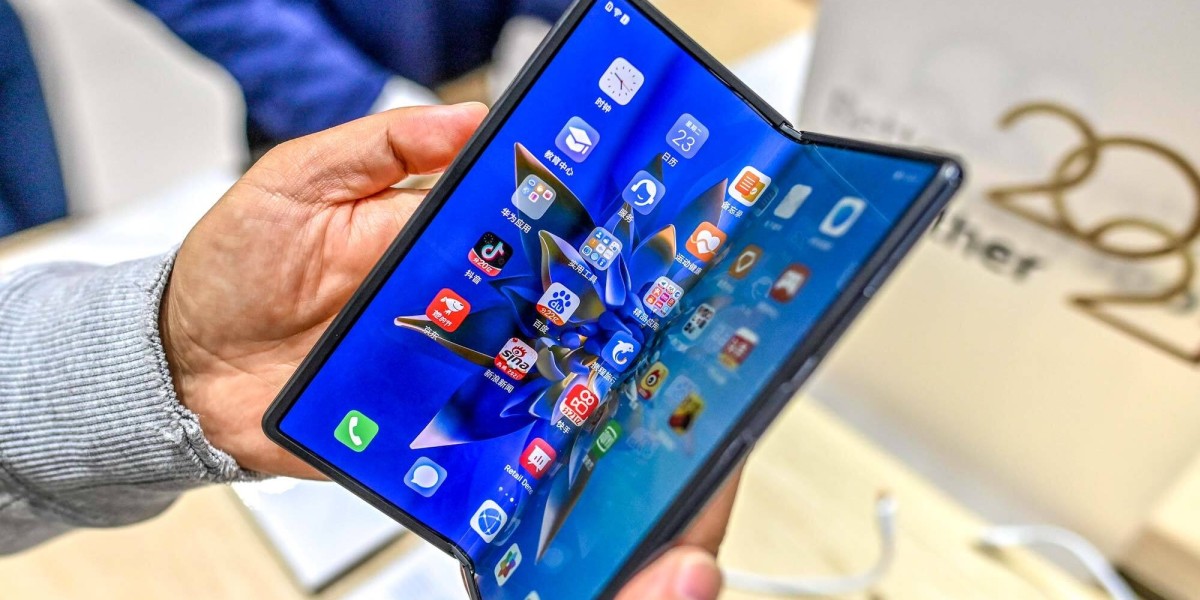Foldable smartphones are the latest evolution in smartphone design that allows the device's display to fold completely in half like a book or wallet. This folding mechanism allows the device to have a compact folded size for portability while also providing a larger tablet-sized display when unfolded for media consumption or productivity tasks. Some key advantages of Foldable Smartphones include enhanced portability due to their smaller folded footprint, a larger unfolded display for activities requiring more screen real estate, and the ability to multitask or view two apps side by side on certain devices.
History and Development of Foldable Phone Technology
The concept of foldable displays and devices has been around since the 1990s. However, it took significant advancements in material science, display panels, and hinge mechanisms to bring foldable smartphones to reality. Some notable early foldable prototypes include the Kyocera Echo from 2011 which had two separate displays connected by a hinge, the ZTE Axon M from 2017 which had two display halves joined by a multi-joint flexible connector, and the Royole FlexPai from 2018 which was one of the first commercially available foldable phones using an OLED foldable display. In 2019, Samsung released the Galaxy Fold which popularized the book-style folding phone form factor ushering in the current wave of commercial foldable devices. Other brands like Huawei, Motorola, and Xiaomi have since joined the foldable phone market. Constant development is improving durability, display quality and bringing down prices to make foldables more mainstream.
Available Models and Their Specifications
Currently, there are a handful of foldable smartphone models available in the market from different brands:
- Samsung Galaxy Z Fold3 5G (2021): 7.6" inner AMOLED folding display, 6.2" outer display, Snapdragon 888 chip, up to 512GB storage, 12GB RAM, 4400mAh battery.
- Samsung Galaxy Z Flip3 5G (2021): 6.7" folding AMOLED display, 1.9" outer display, Snapdragon 888 chip, 128/256GB storage, 8GB RAM, 3300mAh battery.
- Motorola Razr 5G (2020): 6.2" folding pOLED display, 2.7" outer display, Snapdragon 765G chip, 256GB storage, 8GB RAM, 2800mAh battery.
- Huawei Mate Xs 2 (2022): 8" folding OLED display, Snapdragon 888 chip, 512GB storage, 8/12GB RAM, 4600mAh battery.
- Xiaomi Mix Fold 2: Expected to have 8" folding AMOLED display, Snapdragon 8+ Gen 1 chip, 12GB RAM, 512GB storage, up to 5000mAh battery.
All key foldable models currently use ultra-thin glass or polyamide-based display materials for the folding screen and depend on complex hinge mechanisms to withstand opening and closing stresses. Performance specs are often flagship-level but battery sizes tend to be smaller due to space constraints.
Advantages of Foldable Smartphones
The unfoldable form factor brings some unique advantages over regular slab smartphones:
Portability - In their folded form, all foldables have a much smaller footprint that is pocketable compared to full-sized slabs. This makes them highly portable.
Multitasking - Devices like the Galaxy Z Fold allow running up to 3 apps simultaneously by utilizing the larger unfolded canvas. Great for productivity.
Uninterrupted Viewing - Media consumption transitions seamlessly from outer to inner display with no breaks. Binge-watching shows and reading are optimized.
Versatility - Ability to use the device in different modes like a phone, small tablet or propped up between both allows customized usage.
Future Potential - Better apps and interfaces can leverage unfolding interactions. Dual-screen apps may open up new possibilities.
Drawbacks of Foldable Smartphones
While an exciting new form factor, foldables still have some limitations currently:
Durability - As the displays fold repeatedly over time, durability remains a concern. Screens can potentially break from drops or pressing too hard.
Price - Most foldables are significantly more expensive than regular flagship phones due to new screen tech and complex designs.
App Optimization - Not all apps take full advantage or are optimized for the larger unfolded display yet.
Bulkiness - Devices get thicker at the hinge area when folded compared to regular slabs for protection.
Battery Life - Space constraints mean smaller batteries that may not last as long as non-folding phones. Fast charging helps.
Takeaway
Foldable smartphones represent the future of displays and form factors in the mobile industry. While early iterations have some compromises, constant improvements are addressing concerns around durability, user experience and bringing down costs. Their versatile screen sizes allow optimized usage for different scenarios. As more brands enter the segment, competition will only drive further innovation. In a few years, foldables may very well become the new normal as a mainstream smartphone category.
Get More Insights On Foldable Smartphones
About Author
Vaagisha brings over three years of expertise as a content editor in the market research domain. Originally a creative writer, she discovered her passion for editing, combining her flair for writing with a meticulous eye for detail. Her ability to craft and refine compelling content makes her an invaluable asset in delivering polished and engaging write-ups.
(LinkedIn: https://www.linkedin.com/in/vaagisha-singh-8080b91)
Tags
Foldable Tech, Innovative Design, Flexible Displays, Smartphone Revolution, Foldable Screens, Coherent Market Insights



